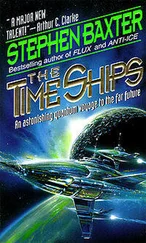What about hearing? Perhaps those mobile Na’vi ears give their hearing a three-dimensional quality like nothing in the human sensorium. There would be no mechanism in Jake’s head to process such information—no analogy in Jake’s sensory world to map onto.
With motor functions it’s a similar picture. It’s easy to imagine Jake’s brain running a fully human avatar. The region of Jake’s brain that “runs” his right hand can be made, through the link, to “run” the avatar’s right hand; there could be a one-to-one mapping between the driver’s brain and the avatar’s body functions.
But there are areas where a Na’vi’s body function doesn’t map perfectly onto a human brain. The most obvious is that prehensile tail. Jake has no subroutines in his head to work a tail (or if he does they are vestigial, relics of very ancient days when human forebears did have tails). More than that, he doesn’t know how it feels to work a tail. Another entirely nonhuman aspect of the Na’vi experience is the neural link to other animals through the queue. No human has ever experienced such a link; we have no neural subroutines in our brains to process the data coming into the avatar’s head from the direhorse or the banshee.
In 1974 an American philosopher called Thomas Nagel published a paper that has become a classic in its field, called “What Is It Like to Be a Bat?” Exploring issues of consciousness and the “mind-body problem”—how mind arises from the machinery of the body—Nagel was attacking what he called a “wave of reductionist euphoria.” Reductionism is the breaking-down of concepts into smaller pieces for the purpose of measurement and understanding. Nagel argued that consciousness must be tied to “the subjective character of experience,” and so, perhaps, can’t be broken down into little bits.
Nagel’s use of a bat as an example is instructive. A bat is a mammal, like me and my little dog, so pretty closely related to us both, but a bat experiences the world entirely differently from us, primarily through its sonar echolocation system. Its brain processes sound inputs into location and distance information. Inside its head, a bat must “see” the world as a kind of shadowy three-dimensional theatre, painted in auditory data.
Nagel argued that it’s impossible for us to imagine how it must be to be a bat. Even imagining a transition from one form to another—to lose your sight, to have leathery wings strapped to your body, to be hooked up to a sonar system—is an artificial exercise. And (though Nagel didn’t take his argument in this direction) the “reductionist” idea that you could brain-scan a bat and download it into a computer store, without it losing its sense of self as a bat, begins to look a bit silly. Maybe we aren’t just abstract information flows. Maybe everything about our cognition is shaped by the way that we’re embedded in our bodies, because that’s the way we apprehend the universe.
To restate Nagel’s question: what is it like to be a Na ’ vi ? The mapping of Jake’s brain to a Na’vi’s body must require a lot of interfacing, beyond the basic spark-by-spark level of neural inputs and outputs, even beyond the higher-level mapping of Na’vi experience to a human mind. Somehow, the governing software must render the sensations of being a Na’vi into forms capable of being comprehended by Jake, at both sensual and inner levels.
However it works, evidently the psionic link does function in giving the driver a fully immersive experience, as we see from the scenes of Jake’s very first linking—his delight in his new body, and in the world he apprehends. And as the movie goes on we see Jake being drawn steadily into the new world at the expense of the old, almost like an addiction to a computer game, until, as he says, the dream of Pandora seems more real than his own humanity.
And ultimately, following the logic of his personal quest, Jake makes the final step: to leave his humanity behind altogether.
34
THE TRANSMIGRATION OF JAKE SULLY
In the final scenes of the movie Avatar , Jake Sully’s human body lies side by side with his avatar in the Tree of Souls.
This is the conclusion of the long journey Jake began when he left Earth on Venture Star . Like Grace Augustine before him, Jake is attempting to complete a full crossing from his broken human body into the avatar. He must pass through the “Eye of Eywa” to do this. The process failed for Grace, though she was preserved in the “buffer” of Eywa’s neural-net memory.
But, when his avatar’s eyes snap open, we see that Jake succeeds.
Once again these scenes in Avatar are reflections of very old myths, of the transference of souls from the body. The ancient Greeks believed in the transmigration of the soul: after death your shade drinks from the River Lethe, loses all memories of past lives, and moves into another human form and is reborn. Hinduism similarly contains a belief in transmigration.
Today we are still grappling with the implications of such ideas. Jake submits to Eywa, hoping she will choose to “save all that [he] is” in the avatar body. “All that he is”: a concise way to sum up the deepest mystery of human existence. The key questions are: is the copy of Grace inside Eywa really “Grace?” And is Jake in the avatar body really “Jake?”
Before the final transfer, it is evident from shots of Jake in the link tank as he drives the avatar body that there is something of him left behind in his human carcass. His closed eyes flicker, as if he is in “REM sleep” (rapid eye motion). Maybe avatar-driving is like an exceptionally vivid dream. Indeed, a good bit of what makes up Jake must remain in the human body, rather than be downloaded into the avatar’s head: his memories of Earth, for example. And memories from his avatar experiences are stored back in his own brain, for he remembers the experiences after the link is broken. (Transferring memories presents another technical issue for the link mechanism, incidentally. Your memory of the last sentence you read isn’t stored in one place in your head like a little photograph, but is held as a distributed pattern of neuron sparkings.) For Jake to complete the crossing into the avatar, all these memories must be ported over, along with everything else that is a part of his personality.
But even if the entire contents of Jake’s brain are read and downloaded successfully into the avatar, does “Jake” come with it too? What is “Jake?” That is, what is his consciousness, and how is it related to his brain and body?
We are now venturing into waters so deep they make quantum mechanics look like a Sudoku puzzle. Philosophical musings on the nature of the self date back to Plato. In the seventeenth century, Descartes, with his famous declaration “I think therefore I am,” was an early modern western thinker about what has come to be called the “mind-body problem,” the question of how something as ineffable as the human mind can be connected to the lump of meat that is the human body. But other cultures have considered the problem too. The Buddhists, it seems, believe that consciousness is the primary reality.
The position of many modern neuroscientists, as well as visionary futurologists like Ray Kurzweil, is that “Jake,” his mind, everything important about his essence—“all that he is”—derives from the patterns of activity in his brain. Consciousness is an “emergent” quality, and it arises the way a higher-order property like the temperature of a mass of gas “emerges” from the motion of the collection of individual molecules that make up the gas. And if you copy that brain pattern with perfect fidelity, and then if you download that pattern into another substrate, biological or artificial, then yes, that copy still “is” Jake in any meaningful sense.
Читать дальше










